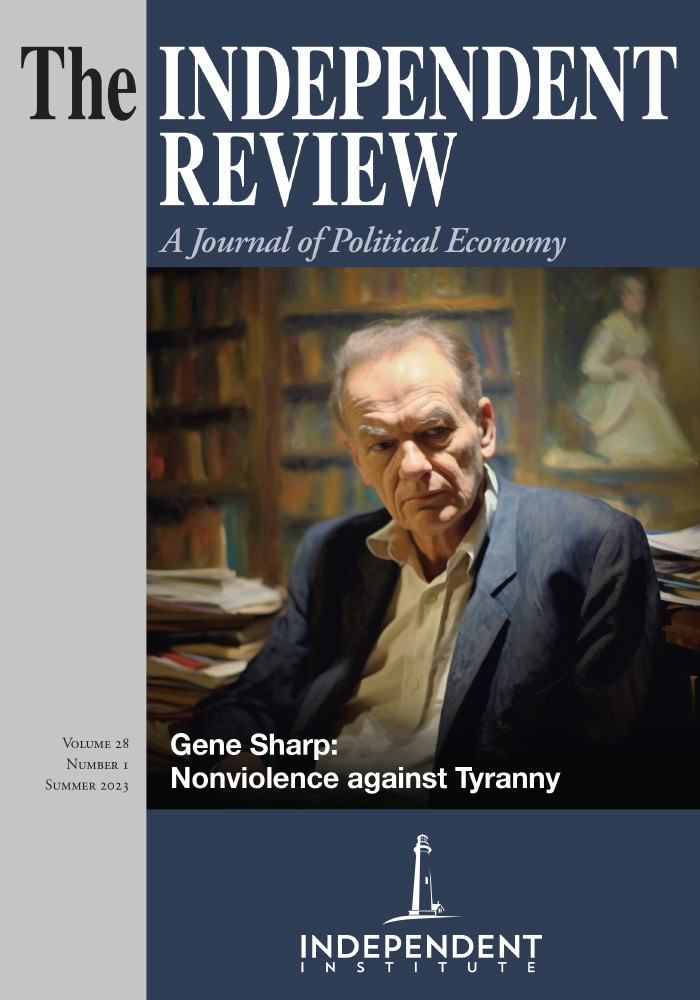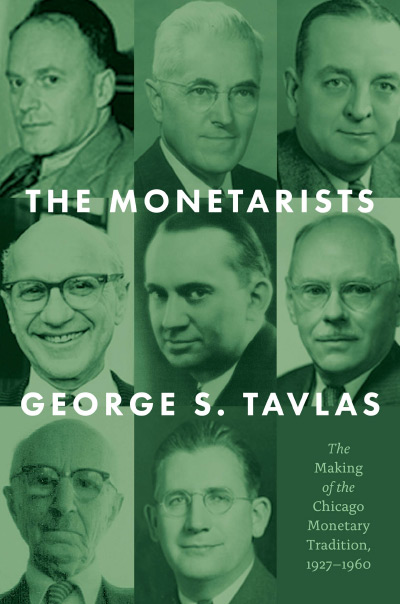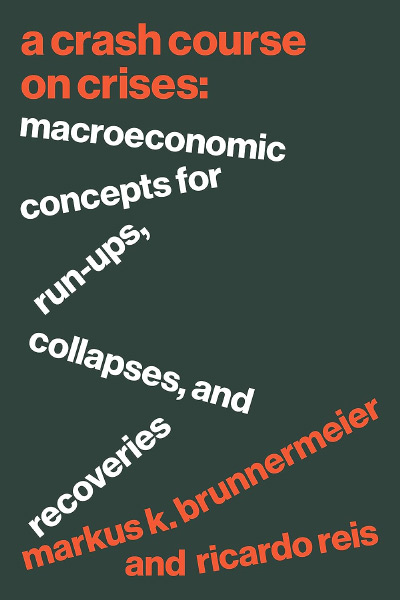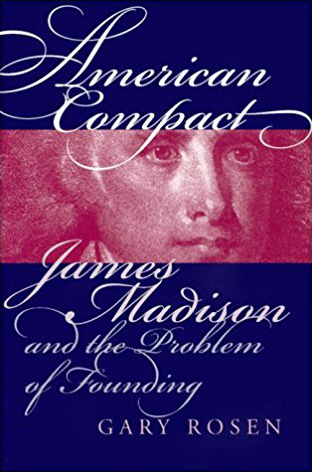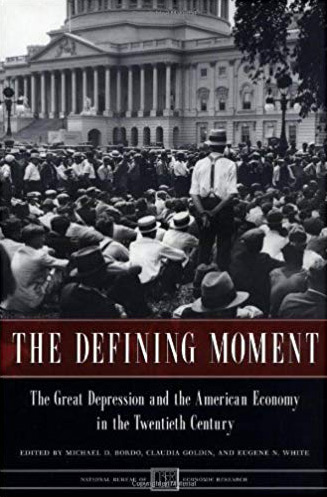An informative, well-structured history of central bank behavior can provide important context to help us interpret the vast expansion of arbitrary powers wielded by central banks in recent decades. Economists in the 1990s had stressed the value of “central banking independence” (CBI), leading to a few curbs (like “inflation targeting”) on politicized behavior. Yet CBI today is a bygone issue, as central banks issue huge sums of money, suppress interest rates, and monetize public debts without limit. Wood tries to document and explain this ominous trend, with only mixed success.
The main value in the book is Wood’s suspicion—rare among economists—that central banks have been established and empowered not to correct “market failures,” smooth business cycles, fight inflation, or ensure sound banking but to help fund fiscally profligate governments and provide fragile big banks with periodic bailouts. This best explains why central banking (and its auxiliary features, like deposit insurance) hasn’t delivered on its promises; central bankers have more often accentuated cycles, stoked inflation, inflicted deflation, and eroded the soundness of private banking. Defenders dismiss this critique as cynical, but it’s realism with empirical support, and consistent with the public choice school of political economy.
Wood’s book is more circumscribed than its title suggests; it does not compare all central banks through all time but only the two most storied banks, only during a select number of crises, and anecdotally rather than analytically. Wood’s opening chapter (Governments and Their Banks) sets the tone, suggesting that central banks are more political than economic and more driven by personalities than by fixed rules. As he puts it, “this book is about monetary policy, especially the people behind those policies,” and only “during crises in the last two centuries” (p. 1). Wood provides selective narratives to convey what he sees as fundamentally political dealings between fiscally needy finance ministers and all-too accommodative central bankers. Unfortunately, he concurs with most economists that central banks are more the cure than the cause of crises (liquidity famines, suspensions of gold-convertibility, debt defaults, bank failures).
Wood provides occasional plots of long-term data, but they don’t illustrate the vast expansions in deficit-spending, public debt, money supply, and central bank balance sheets that have occurred in recent decades. A recent worthy account of the relevant data can be found in Willem Buiter’s 2021, Central Banks as Fiscal Players: The Drivers of Fiscal and Monetary Space, (Cambridge: Cambridge University Press). Wood doesn’t believe recent fiscal expansions or debt monetization constitute major policy shifts affecting central bank behavior for the worse. The “consistency” in his title reflects his premise that the top central banks have been consistently political throughout their entire history; he doesn’t believe they became more political in the past when unconstrained by fixed rules, nor more political over the past two decades.
Many of Wood’s exhibits are meandering biographical sketches of major players, reflecting his view that central bankers (and their collaborators in finance ministries) are mostly political actors driven by idiosyncrasies and partisanship rather than by institutional rules (whether the gold standard, money supply growth, or interest-rate setting). He also suggests that strict rule-following by central bankers leads to disasters—deflation, bank failures, and economic depressions. Oddly, he holds special disdain for the gold standard, even though central bankers have often performed best (and public outlays have been less funded by debt) when they’ve been subject to its rules. Wood acknowledges that the Bank of England and Federal Reserve violated gold standard rules, but he nonetheless blames the standard instead of the machinations of supposed standard bearers. In this regard, his account is as conventional as that of Monetarist and Keynesian economists.
While the first half of Wood’s book covers crisis-period behavior by the Bank of England (established in 1694 to help fund war against France), the second half addresses crisis-period behavior by the Federal Reserve. Too often the text goes “into the weeds” with so much extraneous detail as to make us miss his points. Strange anomalies also mar the book; for example, it has no discussion of the Bank of England after 1997; Wood devotes a chapter to U.S. money and banking before the Fed was established in 1913; he also offers a chapter on the U.S. enmeshing itself in “endless wars” since World War II but without relating them to Fed behavior; strangest of all, Wood inserts a chapter, “the politics of famine,” which doesn’t even mention central banking.
Wood’s book would have benefited by more engagement with CBI literature. Clearly CBI has eroded during the current century, alongside revivals of socialist and Keynesian policy prescriptions, especially as embodied in Modern Monetary Theory (chronic deficit spending, zero interest rate policies, “quantitative easing”). A truly comparative approach would stress that these unorthodox policies were adopted first by the Bank of Japan in the 1990s, long before they were adopted in this century by the Bank of England, Federal Reserve, and Europe Central Bank. What common political factor has driven this proliferation of unorthodox policy? Wood does not say.
Valuable related literature can help us better appreciate Wood’s book. Charles Goodhart (1988, The Evolution of Central Banks, Cambridge, Mass.: MIT Press) documented how the origins and development of dozens of major central banks were purely political, serving state needs. George Selgin and Lawrence H. White first pinpointed how central banking assists chronic deficit spending (1999, A Fiscal Theory of Government’s Role in Money, Economic Inquiry 37 [January]:154–165). My own history showed that America’s Fed-dominated system eroded bank safety and soundness, compared to the freer, more fiscally responsible gold standard era (Breaking the Banks: Central Banking Problems and Free Banking Solutions, 1990, Great Barrington, Mass.: American Institute for Economic Research). More recently, Christopher A. Hartwell captures the “about face” of some economists regarding the real purpose of central banks: On the Impossibility of Central Bank Independence, 2019, Cambridge Journal of Economics 43 [January]: 61–84.
Wood doesn’t say so explicitly, but central banking is best understood as central planning applied to money and banking, and just as central planning erodes economic prosperity, central banking erodes monetary integrity (and indirectly, economic prosperity). CBI was a serious policy aim in the 1990s because of the collapse of socialist regimes and of belief in central planning. If economic central planning per se yields disaster, so might discretionary monetary central planning.
That central banking is antithetical to a capitalist system should now be obvious (but isn’t). Historians of economic thought (and central bank theory) know that one of the ten demands of the Communist Manifesto (1848) by Marx and Engels was for a “centralization of credit in the hands of the state, by means of a national bank with state capital and an exclusive monopoly.” The Bank of England was established in 1694, Germany’s Reichsbank in 1876, and the U.S. Federal Reserve in 1913. Much has changed over the past two centuries in how and why central banks operate as they do. They used to issue gold-convertible money and obey the gold standard, but not for at least the past half century (since 1971); they used to monetize public debts and inflate only during emergencies (wars), but now do so perpetually (to finance not just the deficit-prone warfare state but welfare state too). Oddly, Wood concedes that abandonment of the gold standard has enabled more politicized policymaking; but he denies that this has materially altered central bank theory or behavior. He suggests that central banking was always as political as it now seems to be and will always be so. Yet he’s also no abolitionist. In his summary chapter he declares that “little has changed in the fundamentals of central banking over the last two centuries beyond the abandonment of the constraints of the gold standard, which has allowed more political pressures on monetary policies in the form of government finance and bailouts of and other subsidies of the big banks” (p. 268). Moreover, central bank “practice has changed less than theory” (p. 272).
That’s an odd interpretation, because in monetary history the most fundamental change has been from objective, gold-based systems to subjective, personality-based systems—from systems driven by the economic needs of commerce to those serving the political needs of statism. The change is more apparent when historians assess decades of behavior by all central banks—the good, the bad, and the ugly. Wood surveys only two of them, of course—major ones who perhaps have misbehaved least. They’ve been political to some degree since their inception but have become more so in this century. Wood only partly comprehends this—including the role played by the gold standard (and its absence). A broader survey would have exposed much worse (because more politically motivated) behavior. Had Wood also provided data series of money supply, budget deficits, public debts, inflation, and interest rates for the U.K. and U.S. over the past two centuries, we could better discern fundamental differences in performance, especially between periods when states were fiscally responsible (or not) and central banks were on the gold standard (or not).
| Other Independent Review articles by Richard M. Salsman | ||
| Fall 2024 | Nozick on Taxation: The Necessity of Funding the Legitimate State | |
| Summer 2024 | Life After Capitalism: The Meaning of Wealth, the Future of the Economy, and the Time Theory of Money | |
| Fall 2023 | Alexander Hamilton as Economist: A Proper Verdict | |
| [View All (5)] | ||

